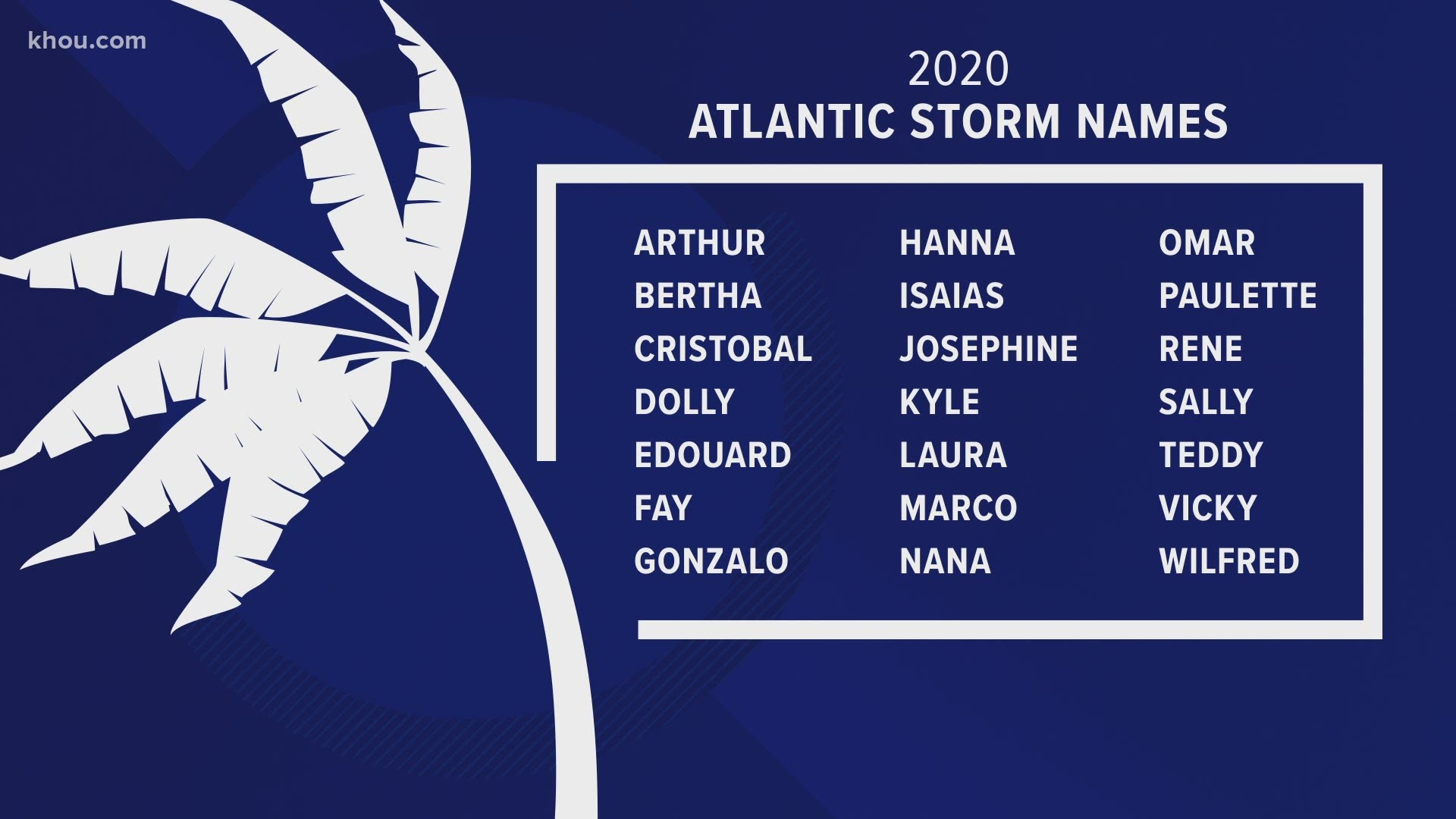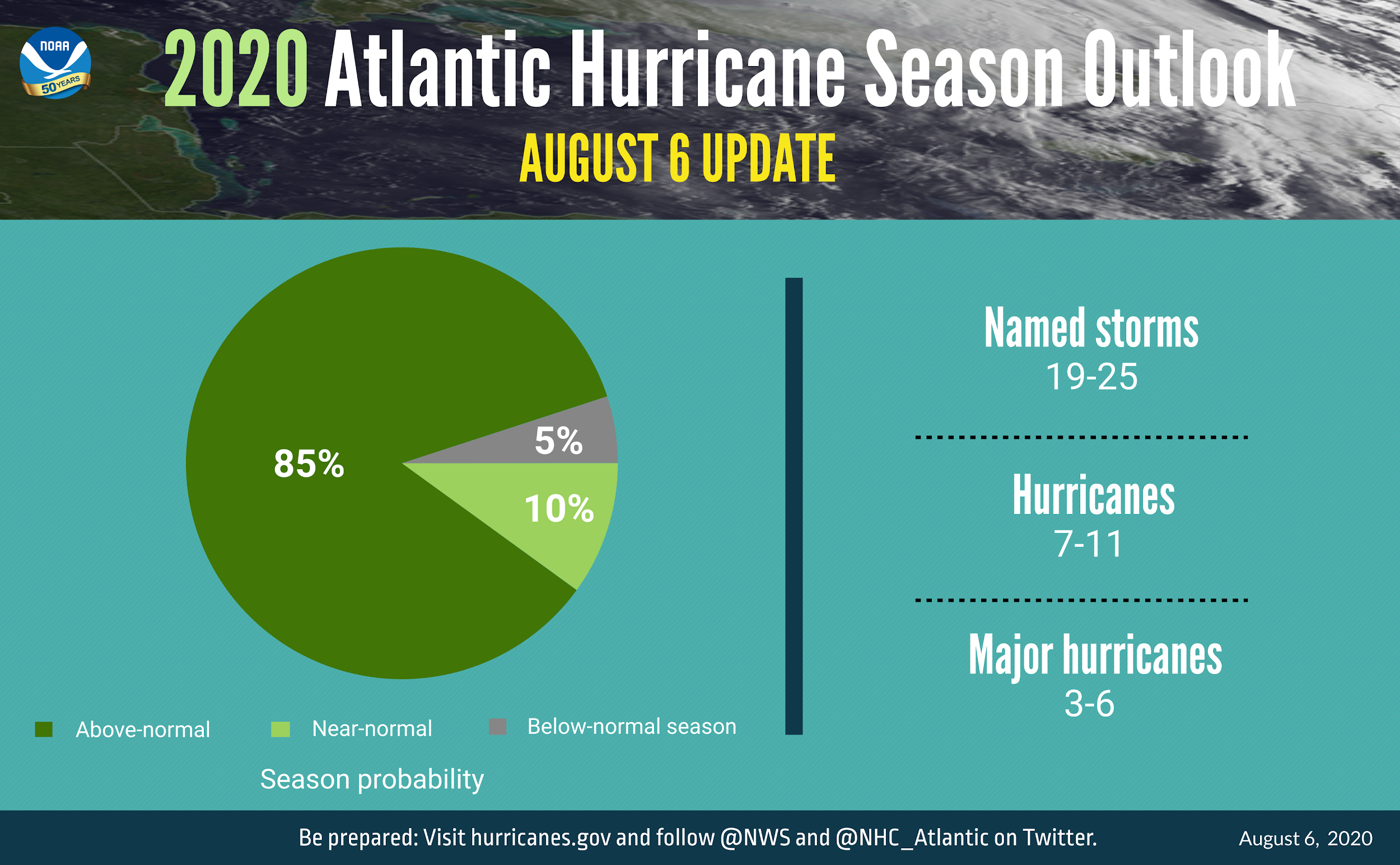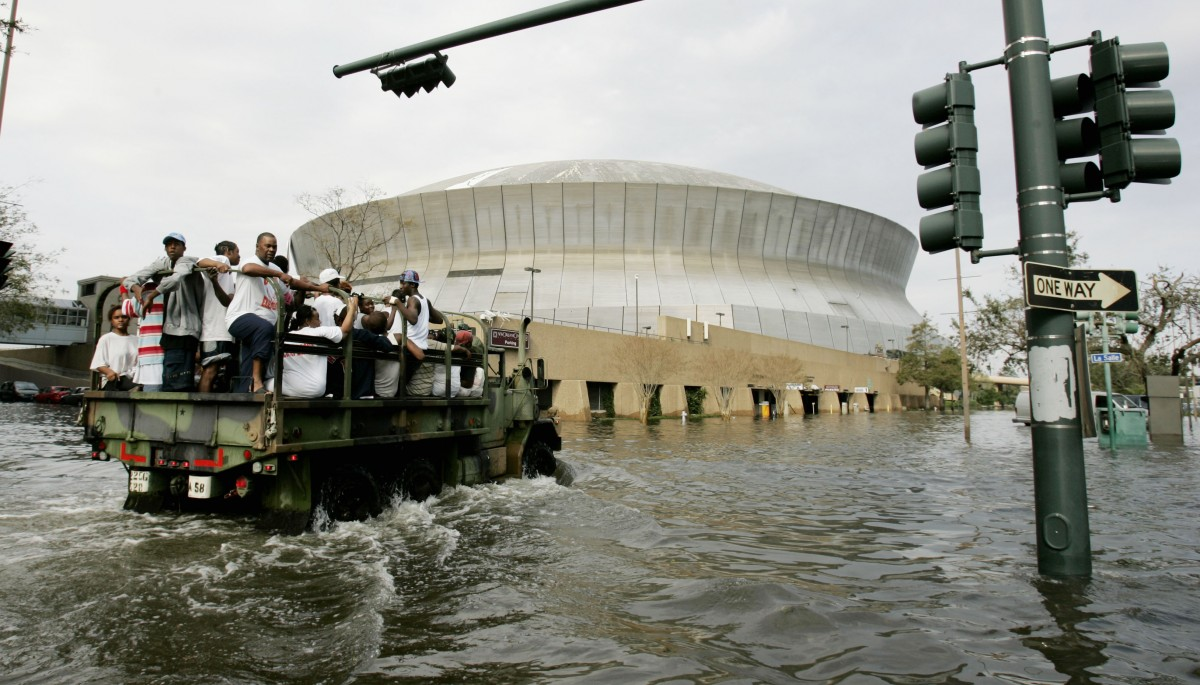The 2020 Atlantic Hurricane Season refers to a period of storm development from June 1 to November 30 in the Atlantic region. The specific areas monitored include the Atlantic Ocean, Gulf of Mexico, and the Caribbean Sea. The 2020 season has begun with great intensity, with a record nine storms named as of the first week of August. On average, 12 storms form during the whole season, with only two forming by early August. Generally, 6 of these will be hurricanes, and 3 of those will be major ones. The figures suggest that the 2020 season will be the most active one on record, and as such, the National Oceanic and Atmospheric Association (NOAA) has urged American citizens to brace themselves and take necessary precautions.

The NOAA has stated that a number of factors have contributed to the exceptionally high activity of the season; rising sea temperatures in the Atlantic Ocean and the Caribbean Sea, reduced vertical wind shear (wind velocity), weaker tropical Atlantic trade winds, and an enhanced West African tropical monsoon. The Atlantic Multi-decadal Oscillation (AMDO) refers to the variability in the surface sea temperatures of the Atlantic Ocean. The AMDO is currently in its warm phase, and this is thought to be a significant factor in determining the intensity of the current season. A final climate factor thought to contribute to the activity of the season is the development of La Nina, a cooling climatic trend which cools sea temperatures (the reverse effect of El Nino). La Nina could further dampen the intensity of the Atlantic wind shear and facilitate the formation of storms.
Hurricane intensity is measured using a metric called the Saffir-Simpson Hurricane Wind Scale. Hurricanes are rated on a scale of 1-5, which denotes the level of property damage. If a hurricane receives a rating of 3 or more, it is classified asmajor. Overall hurricane season activity is measured by a different metric, called the Accumulated Cyclone Energy Index (ACE). Based on ACE projections, the probability of an above average storm season in 2020 is estimated to be 85%, with a 10% chance of an approximately normal season, and a 5% chance of a relatively inactive season.

The analysis and estimates of the NOAA are for the overall season and are not landfall forecasts, i.e., they are unrelated to storms which could develop along coastlines and affect coastal populations. The creation of landfall storms are determined more by short-term weather patterns. Potentially dangerous tropical storms can only be predicted a week or so in advance, and warnings are issued to citizens accordingly.
An Accuweather hurricane forecast suggested that the season might rival the 2005 storm season, which contained an incredible 28 named storms, including the infamous Hurricane Katrina.

Source: Next City
The combination of the intense storm season and the troubles of the COVID-19 pandemic has officials worried. Evacuating people in the event of storms reaching landfall might be more problematic owing to social distancing requirements. American citizens have hence been advised to take any safety measures they can beforehand in order to minimize losses and difficulties. Time will tell just how impactful the season will be.
By: Aahan Tulshan
References:
- https://www.noaa.gov/media-release/extremely-active-hurricane-season-possible-for-atlantic-basin
- https://www.usatoday.com/story/news/nation/2020/08/13/hurricane-season-hyperactive-level-activity-expected-august/3363321001/
https://edition.cnn.com/2020/05/11/us/2020-atlantic-hurricane-season-fast-facts/index.html
